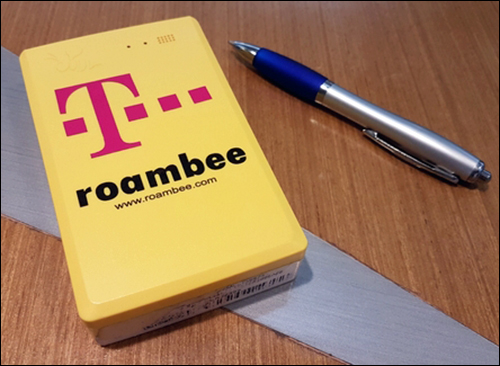T-Systems, a German provider of IT solutions and services, has developed a Web-based radio frequency identification technology (RFID) and Internet of Things (IoT) platform, with sensors that allow users to collect data such as location, humidity, temperature, movement, gases in the air, shock and other environmental variations. The solution works with a smart device from Roambee, a Silicon Valley company from which T-Systems has become a $3.1 million investment partner for Deutsche Telekom Strategic Investments.
Large companies in Brazil are already testing the T-Systems platform with the Roambee device, which can be configured with the necessary sensors for each application—for example, with GPS for location tracking and GPRS for communication. The companies piloting the technology in Brazil have not yet authorized the release of their names, but they work in the mining and metallurgy areas.

The device acts as a beacon, periodically emitting signals with sensor information, which allows remote tracking and decision-making. “The longer the interval between Roambee’s signals, the longer the battery life of the device,” said Luis Fernando Tadei, T-Systems Brazil’s head of digital transformation.
To meet a wide range of segments, the solution allows, for example, the monitoring of the temperatures and locations of sensitive medicines during transportation, using real-time data and alerts that allow actions in case of need. Roambee will provide software-as-a-service (SaaS) applications that include wireless portable sensors and cloud-based software, robust reporting and predictive analytics. The solution will be delivered from a scalable T-Systems platform, providing access to a global infrastructure of secure data centers and cloud solutions from its partner ecosystem.
T-Systems and Roambee have a global partnership for offering real-time visibility solutions to the consumer and asset-tracking markets in the Americas, Africa, Asia and Europe. Together, the two companies will use the on-demand business model to deliver an end-to-end solution that will enable visibility and the monitoring of embedded and active products, both in transit and in the field.
Roambee’s solution consists of devices equipped with wireless portable sensors, known as “Bees,” and a cloud-based software platform. The Bees and software collect large volumes of data from enterprise resource planning (ERP) systems and sensors, as well as external data, to deliver predictive analytics that increase operational efficiency, reinforce customer engagement, reduce risk and ensure metrics for return on investment (ROI) calculations.
“With more than 100 customers around the world, Roambee is experiencing a moment of accelerated growth in the IoT market,” says Sanjay Sharma, Roambee’s CEO and founder. “With T-Systems as our strategic partner, we will be able to expand service to our customers and win new ones. Now we do not have to worry about building our own global service structure that is needed to maintain the quality and wealth of experience of our customers.”
Improving field asset monitoring requires a high level of confidence in the monitoring system, as well as reporting and regulatory compliance. Roambee technology provides all of this, the company reports, making it simple for businesses to increase their efficiency, implement risk management and transform data into measurable value.
T-Systems will operate the service from its data center in Germany, complying with data privacy regulations. Customers will receive real-time alerts, reports, history and data analysis that, according to the company, will meet the highest data security standards.
As reported this week, Roambee recently released its BeeBeacon system, which consists of small, low-cost beacon devices and Bee hubs to receive transmissions, using BLE, GSM or Wi-Fi connectivity to track goods in large volume through warehouses, on ships and vehicles, and at stores (see New Beacon Solution Offers Low-Cost Supply Chain Visibility). The BLE-based system serves as an alternative to technology such as RFID, the company reports, since it can provide visibility of a tagged item—whether inside, outside, or in motion—at a relatively low cost.


